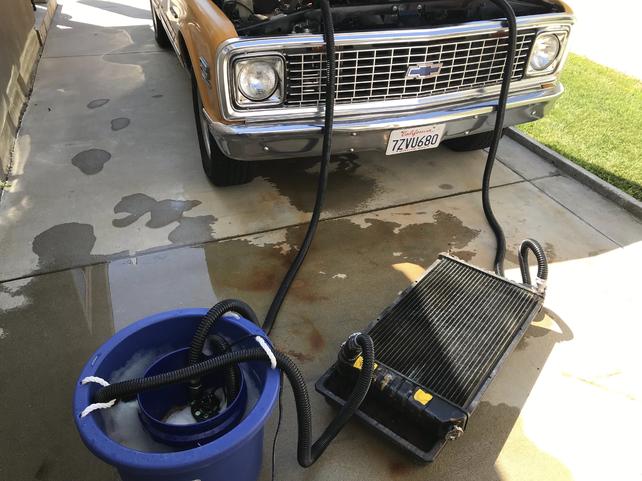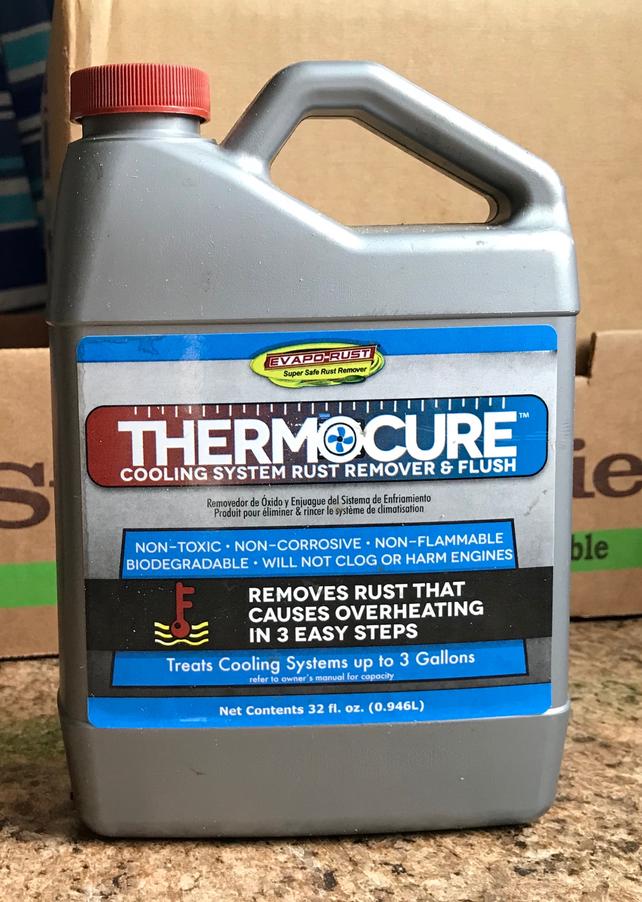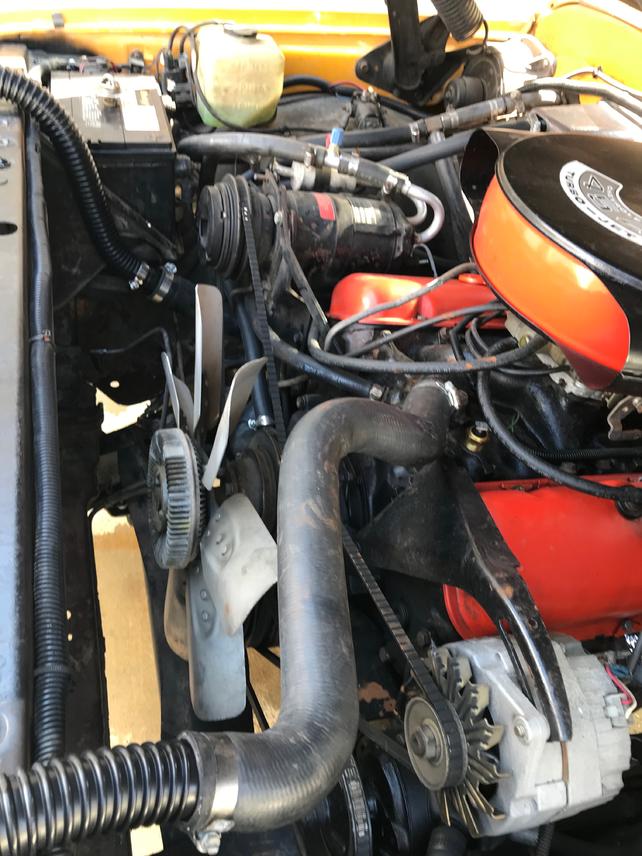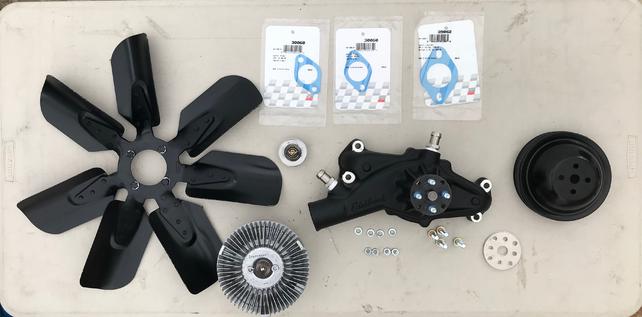Woody’s Cooling Saga Continues:
Wow…this has turned into a job and a half, mostly because I have been trying to figure it out and do the work myself. Doing one “fix” at a time had me repeating some of the same labor more than once, but I really wanted to know which part was the culprit!
Having the new Stewart Warner mechanical temperature gauge kept the results (or lack of results) easy to track, and the first thing I did was pull the radiator with the intention of dropping it off to be professionally flushed/boiled out. After doing the labor of the removal, I figured that I might as well stick a garden hose in it to see what comes out…and man, it seemed like half of the Lancaster desert was hiding in there. It was a red claylike material that came out in chunks, but would not break down with water unless I mashed it with my fingers, then it became very fine and silky. It took probably an hour and a half of flushing until the reddish water was running clear, so I felt like I had accomplished the task at hand…and I also found that the bottom third of the recovery tank had the same substance in it, which required using a long spoon like device to scoop it out as water had little power over this “clay”. Even though I was feeling confident that I had found the main issue, I decided to set up a recirculating flush system out of a submersible pump I had, and purchased a rust dissolver called Thermocure, which is safe for all metals, gaskets and seals. First, I flushed out the engine water passages by hooking into the radiator hoses and ran that until the water was clear. A lot of reddish water came out but no clumps. I had already removed the T-stat, so I ran it in both directions for quite a long time…and felt confident with that, so now I put the radiator into the loop with the engine block and circulated the Thermocure through both for a few hours…then flushed with clean water until it was all out. As if this wasn’t enough, I reinstalled the radiator, filled it with the Thermocure solution and took it on a two hour freeway drive, came home, flushed it clean, replaced T-stat (now using a 160), refilled with 50/50 coolant…then went for a drive so I could revel in my success! Unfortunately, there was not any improvement at all???
At this point, it had to be the Fan-Clutch or the water pump…so I ordered a Hayden severe duty fan clutch and an Edlebrock high volume water pump, along with assorted gaskets, etc…and after installing the new parts, took it for a test drive. The results were insignificant, with just a slight improvement that I attributed to the high volume pump pushing more water through the radiator…but I was back to blaming the radiator! I once again removed the radiator, dropped it off at the shop for a old fashioned “rodding”, but then got the news that the core was beyond repair internally…and needed a new core. A couple days later, I picked up my “new” radiator which was still an all copper 4 core radiator using all USA materials and manufactured about 50 miles from my home…and it fit back in perfectly! Somehow, they assembled it with more cooling tubes and fins per sq. in., so it had to do the trick this time, right? The results were okay…but not as substantial as I was hoping for (205 to 210 around town…and 215 to 220 pushing it on the grade). The temperature did stabilize back to 205 once off the grade quicker than before, so I knew everything was working right, and as my S/W gauge was installed in the driver’s side head water passage, I concluded that my results would have more conventional readings if I relocated it to the T-stat housing. Well guess what…on my 454, the readings were identical, so I don’t know if it is really true that head water readings are higher than T-stat water readings…but on mine, there’s no difference?
Like so many others have reported, the temperature also climbs while sitting in traffic or at a light…so electric fans were already on my mind. I started taking measurements and researching online…but haven’t come to a decision yet (and I’m open for recommendations), however, while looking at the space available in front of the radiator, I started thinking about the gaps that my shroud has between it and the radiator. It wasn’t an issue with the old radiator (before my troubles began) but because the new radiator has more tubes and fins per sq. in., I surmised that it must be harder to pull air through it. I cleaned the needed areas, then applied a wide aluminum tape all the way around the shroud and sealed up any places that air could sneak-in…and went on another test drive. This was the most significant improvement of all with readings of 190 to 195 around town and 200 to 205 pushing it up the grade! Sitting at lights still gets to almost 210, so I’m still going to add some electric fans at some point, but for now I want to start driving places again!
I know this was a long-winded report and a lot of members are probably sick of hearing about “MY” cooling issues, but I was really hoping for better results than 190…so is this just how hot BBC’s run or is it possible the water passages in the block are restricted with hard corrosion that doesn’t break down through conventional methods? If you got to this final question…I thank you for reading this entire novel!
Woody



